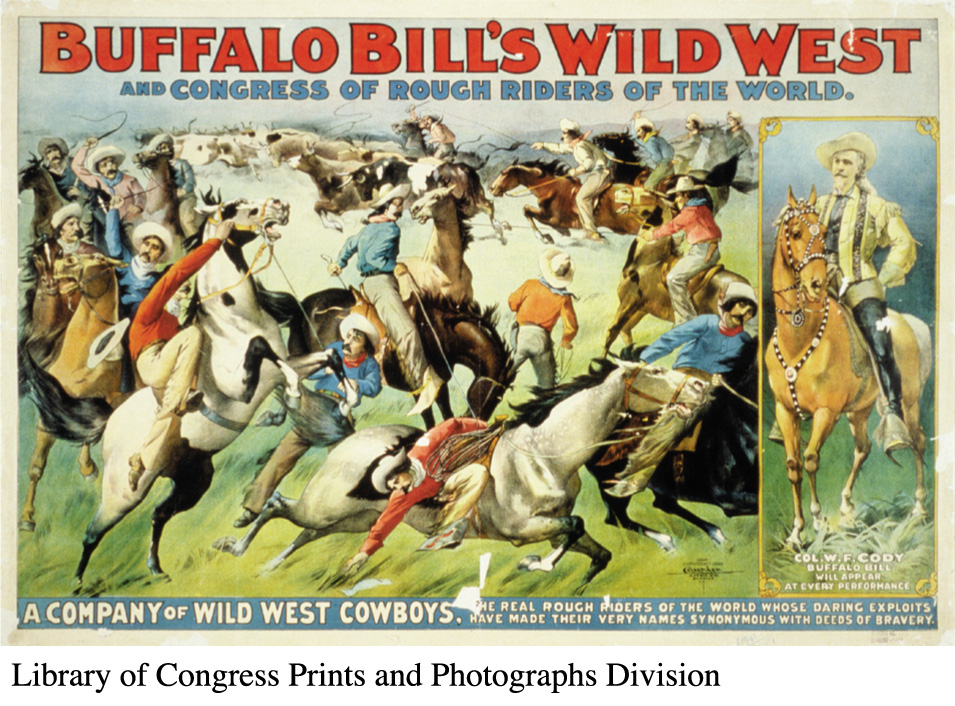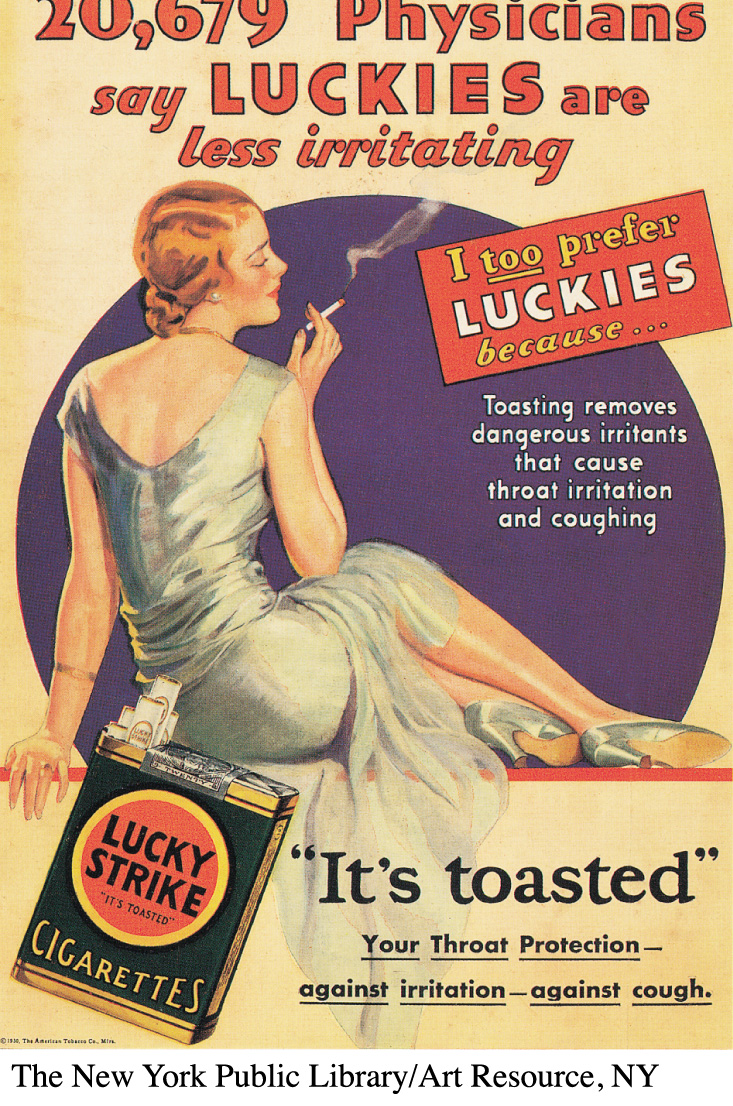Early History of Public Relations
Public relations traveled an interesting path in its journey toward becoming a profession. The first PR practitioners were press agents, people who conveyed favorable messages to the public about their clients, often by staging stunts that reporters described in newspapers. As the United States became industrialized and people began purchasing more goods and services, larger companies—impressed by press agents’ power to shape public opinion—began hiring these early practitioners to further their interests. Some PR tactics proved deceitful, but when journalists and citizens complained, PR agencies began policing themselves to foster more ethical practices in the profession.
Age of the Press Agent: P. T. Barnum and Buffalo Bill
The earliest press agents excelled at publicity—a type of PR communication that uses various media messages to spread information and interest (or buzz) about a person, a corporation, an issue, or a policy. The most effective publicity efforts not only excited people’s imagination but also helped establish enduring national values.
In the 1800s, some publicity tactics could also border on outrageous. Consider press agent Phineas Taylor (P. T.) Barnum, who used gross exaggeration, fraudulent stories, and staged events to secure newspaper coverage for his clients, for his American Museum, and (later) for his circus, which he dubbed “The Greatest Show on Earth.”

William F. Cody was another notorious publicity hound. From 1883 to 1916, Cody, who once killed buffalo for the railroads, used press agents to promote himself and his traveling show: “Buffalo Bill’s Wild West and Congress of Rough Riders of the World.” The show employed sharpshooter Annie Oakley and Lakota holy man Sitting Bull, whose legends were partially shaped by Cody’s press agents. These agents were led by John Burke, one of the first to use an array of media channels to generate publicity. Burke promoted Cody’s show through a heady mix of newspaper stories, magazine articles and ads, dime novels, theater marquees, poster art, and early films. Burke and Buffalo Bill fired up Americans’ love of rugged individualism and frontier expansion—a national mythology that later showed up in books, radio programs, and Hollywood films about the American West.
Business Adopts Press Agent Methods
The successes enjoyed by P. T. Barnum, Buffalo Bill, John Burke, and others demonstrated that publicity could not only stimulate business but also help any individual or organization (such as not-for-profit groups and government agencies) spread the word about its value and fulfill its mission. For businesses, press agentry became an important mechanism for generating the profits and (in some cases) bringing in the government funding needed to achieve their mission. However, in the early days of press agents, some of the tactics used were especially deceptive.
Around 1850, for example, the railroads began hiring press agents to help them obtain federal funds, which hinged on positive public perceptions of the railroads’ value. These agents’ tactics included bribing reporters to write favorable news stories about the railroads. Agents also engaged in deadheading—giving journalists free rail passes with the tacit understanding that they would write glowing reports about traveling by rail. Finally, the larger railroads used lobbyists—professionals who seek to influence lawmakers’ votes—to gain federal subsidies and establish policies (such as rate reductions) that made it harder for smaller regional lines to compete. Thanks to such efforts, a few large rail companies gained dominance over the industry.
Utility companies such as Chicago Edison and AT&T also used press agent strategies in the late 1800s for similar ends. Again, some of their tactics were deceptive. For instance, they, too, bought votes of key lawmakers, and they hired third-party editorial services to produce written pieces in their favor. For example, these services sent articles touting the utilities to newspapers, produced ghostwritten articles lauding the utilities’ value, and influenced textbook authors to write historical accounts that put the utilities in a positive light.4
Professional Public Relations Emerges
By the early 1900s, some journalists began investigating and reporting on the questionable promotional practices businesses were using, which helped increase awareness of these tactics among the public. Facing a more informed citizenry, businesses were finding it harder to buy favorable press and use it to mislead people. Two PR pioneers—Ivy Ledbetter Lee and Edward Bernays—realized that public relations needed to be more professional. To that end, they ushered in new approaches that emphasized honesty, directness, and an understanding of psychology and sociology.
Ivy Ledbetter Lee: Two Sides to Every Story
Press agent Ivy Ledbetter Lee counseled his corporate clients that honesty and directness were better PR devices than the deceptive practices of the 1800s, which had given big business a bad name. Lee opened one of the first PR firms in the early 1900s with George Parker. Following a rail accident in late 1906, the Pennsylvania Railroad hired the firm to help downplay the resulting unfavorable publicity. Lee advised the railroad to admit its mistake, vow to do better, and let newspapers in on the story, rather than trying to cover up the accident or deny responsibility. In 1912, Lee quit the firm to work for the Pennsylvania Railroad.
In 1914, Lee went to work for John D. Rockefeller Jr., who by the 1880s controlled 90 percent of the nation’s oil industry. Rockefeller and his Standard Oil Company already had image problems, beginning when journalists published a powerful muckraking series about his business tactics in 1902–1904. In 1913–14, strikebreakers at one of Rockefeller’s mining companies and members of the state militia battled striking coal miners trying to win recognition for their union. Fifty-three workers and their family members were killed in Ludlow, Colorado. The oil magnate hired Lee to contain the damaging publicity fallout. Lee immediately distributed a series of “fact sheets” to the press, telling the company’s side of the story and discrediting the tactics of the United Mine Workers, who had organized the strike. Lee clearly recognized that there are several sides to every story, and that decisions about which facts to present to the public, and which to leave out, could strongly shape public perceptions. Lee also brought in the press and staged photo opportunities at Rockefeller’s company, which helped rehabilitate the Rockefeller family’s image. While certainly effective, his efforts earned him the nickname “Poison Ivy” Lee from his enemies.


Edward Bernays: Public Relations Counselor
Edward Bernays opened his own PR office in 1919. He was the first person to apply the findings of psychology and sociology to the public relations profession. Bernays described the shaping of public opinion through PR as the “engineering of consent.” That is, he believed that skilled experts, leaders, and PR professionals could shape messages and ideas in ways people could rally behind.5
Indeed, Bernays referred to himself as a “public relations counselor” rather than a “publicity agent.” Over the years, his client list included such big-name companies as the American Tobacco Company (now R. J. Reynolds Tobacco), General Electric, and General Motors. Bernays also worked for the Committee on Public Information (CPI) during World War I. In that role, he developed propaganda that supported the U.S. entry into the war and promoted the image of President Woodrow Wilson as a peacemaker.
Bernays also demonstrated that women could work in the PR profession. His business partner and later his wife, Doris Fleischman, collaborated with him on many of his campaigns as a researcher and coauthor. PR later became one of the few professions accessible to women who chose to work outside the home. Today, women outnumber men by more than three to one in the profession.


